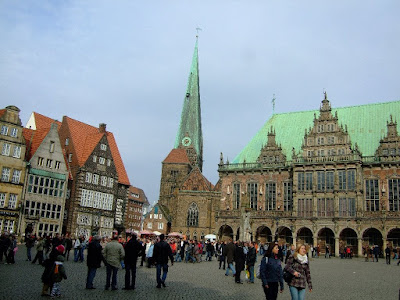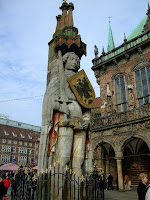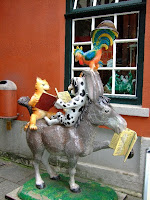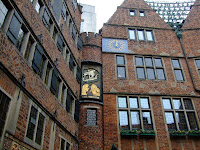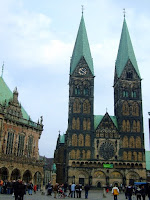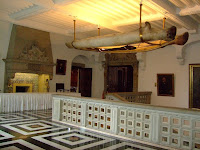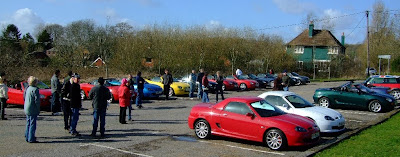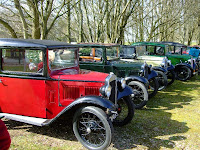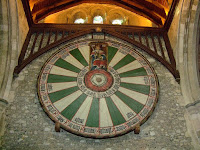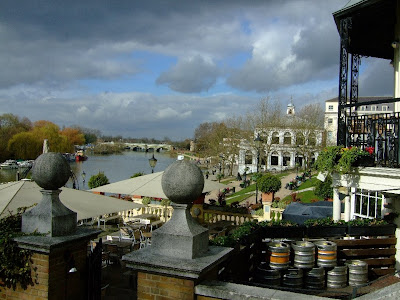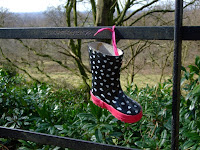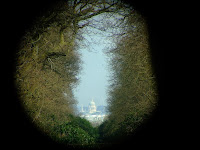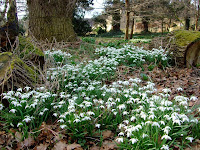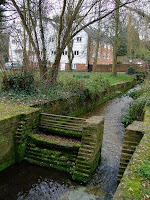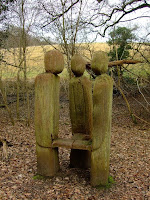
This weekend saw London at its best. The sun shone, temperatures were mild, with spring flowers everywhere.

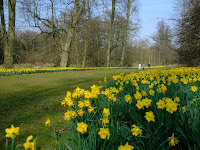
On Saturday we headed north-east to drive a circular route starting at Clare. Leaving this pleasant market town we headed on to Cavendish, with its attractive almshouses and then on to Nowton Park just outside Bury St Edmunds. Once the garden of a stately home, the lime avenue is a blaze of daffodils in the spring, and we were there on the perfect weekend to enjoy their 100,000 bulbs.


From there we drove into the centre of Bury St Edmunds, to enjoy the Abbey, now a ruin, courtesy of Henry VIII. Nearby is St Marys church where Mary Tudor, Henry's sister, is now buried having been moved from the Abbey. Bury claims to have the smallest pub in the country, which can only comfortably seat about six people. We were fortunate and found The Nutshell fairly empty so occupied a significant portion of the seating and enjoyed a drink.
 To the west of Bury St Edmunds is Ickworth House. This stunning country pile, has some very interesting characters in its history, including an agnostic Bishop of Ireland. We enjoyed the gardens as well as looking round the house. One entire wing of the house was built just for the sake of symmetry and for most of its existence had no function; it served as a grain store for the farm for a period but was mostly just a shell.
To the west of Bury St Edmunds is Ickworth House. This stunning country pile, has some very interesting characters in its history, including an agnostic Bishop of Ireland. We enjoyed the gardens as well as looking round the house. One entire wing of the house was built just for the sake of symmetry and for most of its existence had no function; it served as a grain store for the farm for a period but was mostly just a shell.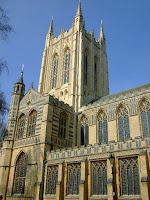 The circular drive took in other towns, the most interesting features were two churches: one, at Great Bradley, with a genuine old Tudor porch and the other, at Kedington, just old and untouched. Old uneven flagstones, old C15th pews, antique triple-decker pulpit and so on. Although this may sound like many churches in England, this one was a real step back into history.
The circular drive took in other towns, the most interesting features were two churches: one, at Great Bradley, with a genuine old Tudor porch and the other, at Kedington, just old and untouched. Old uneven flagstones, old C15th pews, antique triple-decker pulpit and so on. Although this may sound like many churches in England, this one was a real step back into history.
